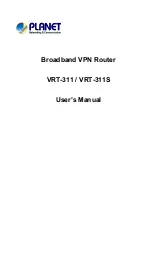
67
Performing Switch Setup Configuration
Information About Performing Switch Setup Configuration
The default configuration file contains the hostnames-to-IP-address mapping for the switch. The switch fills its host
table with the information in the file and obtains its hostname. If the hostname is not found in the file, the switch uses
the hostname in the DHCP reply. If the hostname is not specified in the DHCP reply, the switch uses the default
Switch
as its hostname.
After obtaining its hostname from the default configuration file or the DHCP reply, the switch reads the configuration
file that has the same name as its hostname (
hostname
-confg or
hostname
.cfg, depending on whether
network-confg or cisconet.cfg was read earlier) from the TFTP server. If the cisconet.cfg file is read, the filename of
the host is truncated to eight characters.
If the switch cannot read the network-confg, cisconet.cfg, or the hostname file, it reads the router-confg file. If the
switch cannot read the router-confg file, it reads the ciscortr.cfg file.
Note:
The switch broadcasts TFTP server requests if the TFTP server is not obtained from the DHCP replies, if all
attempts to read the configuration file through unicast transmissions fail, or if the TFTP server name cannot be resolved
to an IP address.
How to Control Environment Variables
With a normally operating switch, you enter the boot loader mode only through a switch console connection configured
for 9600 b/s. Unplug the switch power cord, and press the switch
Mode
button while reconnecting the power cord. You
can release the
Mode
button a second or two after the LED above port 1 turns off. Then the boot loader
switch:
prompt
appears.
The switch boot loader software provides support for nonvolatile environment variables, which can be used to control
how the boot loader or any other software running on the system behaves. Boot loader environment variables are similar
to environment variables that can be set on UNIX or DOS systems.
Environment variables that have values are stored in flash memory outside of the flash file system.
Each line in these files contains an environment variable name and an equal sign followed by the value of the variable. A
variable has no value if it is not listed in this file; it has a value if it is listed in the file even if the value is a null string. A
variable that is set to a null string (for example, “ ”) is a variable with a value. Many environment variables are predefined
and have default values.
Environment variables store two kinds of data:
Data that controls code, which does not read the Cisco IOS configuration file. For example, the name of a boot loader
helper file, which extends or patches the functionality of the boot loader can be stored as an environment variable.
Data that controls code, which is responsible for reading the Cisco IOS configuration file. For example, the name of
the Cisco IOS configuration file can be stored as an environment variable.
You can change the settings of the environment variables by accessing the boot loader or by using Cisco IOS commands.
Under normal circumstances, it is not necessary to alter the setting of the environment variables.
Common Environment Variables
describes the function of the most common environment variables.
Summary of Contents for IE 4000
Page 12: ...8 Configuration Overview Default Settings After Initial Switch Configuration ...
Page 52: ...48 Configuring Interfaces Monitoring and Maintaining the Interfaces ...
Page 108: ...104 Configuring Switch Clusters Additional References ...
Page 128: ...124 Performing Switch Administration Additional References ...
Page 130: ...126 Configuring PTP ...
Page 140: ...136 Configuring CIP Additional References ...
Page 146: ...142 Configuring SDM Templates Configuration Examples for Configuring SDM Templates ...
Page 192: ...188 Configuring Switch Based Authentication Additional References ...
Page 244: ...240 Configuring IEEE 802 1x Port Based Authentication Additional References ...
Page 298: ...294 Configuring VLANs Additional References ...
Page 336: ...332 Configuring STP Additional References ...
Page 408: ...404 Configuring DHCP Additional References ...
Page 450: ...446 Configuring IGMP Snooping and MVR Additional References ...
Page 490: ...486 Configuring SPAN and RSPAN Additional References ...
Page 502: ...498 Configuring Layer 2 NAT ...
Page 770: ...766 Configuring IPv6 MLD Snooping Related Documents ...
Page 930: ...926 Configuring IP Unicast Routing Related Documents ...
Page 976: ...972 Configuring Cisco IOS IP SLAs Operations Additional References ...
Page 978: ...974 Dying Gasp ...
Page 990: ...986 Configuring Enhanced Object Tracking Monitoring Enhanced Object Tracking ...
Page 994: ...990 Configuring MODBUS TCP Displaying MODBUS TCP Information ...
Page 996: ...992 Ethernet CFM ...
Page 1066: ...1062 Using an SD Card SD Card Alarms ...
















































